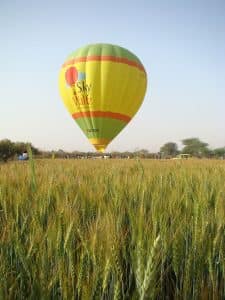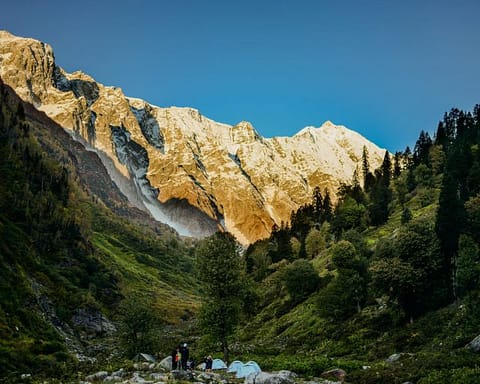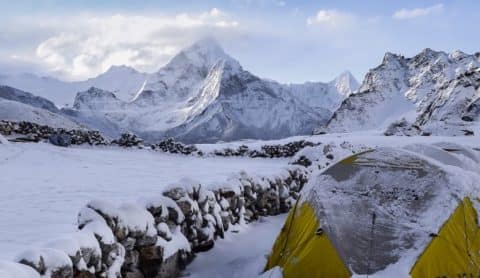Meenakshi
I am a happy-go-lucky person, who loves reading, writing and travelling. Gardening and good food are the other things that I am passionate about. My motto in life is simple, “Love what you Do and Do what you Love”.
Latest posts by Meenakshi (see all)
Scenic Sikkim: Understanding the geographical and cultural importance
For wanderlust ridden souls, nothing could be better than the Goecha La trek, as it quenches the thirst for some real adventure.Sikkim, located in the northeastern part of India, is a beautiful state bordered by Tibet, Bhutan, and Nepal. It boasts a diverse range of plants and animals, as well as picturesque alpine meadows, glaciers, and the world’s third highest mountain, Kanchenjunga. Sikkim has much to offer for those seeking adventure, with its breathtaking monasteries, temples, wildlife sanctuaries, and a variety of thrilling sports.

Know About Goecha La trek (4,876 m)
Trekking Distance: 90 Km
Maximum Altitude: 4,876 m
Duration: 11 Nights and 12 Days
Difficulty Level: Moderate to Difficult
The journey starts at the small village of Yuksom and leads to Dzongri, Phedang, Thangsing, and Goechala. Along the path to the peak, hikers will encounter vibrant farmlands, gentle streams, and suspension bridges. Additionally, hikers will have the opportunity to spend a night camping at the breathtaking meadows of Thansing and Lamuney, beneath the sparkling night sky and moon’s shade.
Is there a recommended time to embark on the Goecha La trek?
In comparison to the plains, climatic conditions differ and keep changing at high altitudes. So, it is advisable to choose an ideal time for the trek to be on the safe side. Notably, there is no specific time to undertake the Goecha La trek. It is said that different seasons bring different surprises for the trekkers that offer immense pleasure to them. So, plan specifically for yourself and make the best of our complete breakdown of Goecha La trekking in different seasons:
Temperature Table
March to May: The temperature ranges from The temperature ranges from 11 °C to 19 °C during the day and 2°C to 10 °C at night.
June to August: During the daytime, the temperature varies between 15 °C and 22 °C, while at night it ranges from 7 °C to -1 °C.
September to November: During the day, the temperature fluctuates between 6 °C and 12 °C, while at night it ranges from 5 °C to -3 °C.
December to February: During the day, the temperature fluctuates between 4 °C and 7 °C, while at night it varies between 4 °C and -5 °C.
Different flavors and colors are brought along by various seasons.
Summer (Last week of March to May)
During the summer season, Goecha La undergoes the melting of snow, which leads to the blossoming of flowers. This area is home to various native species such as the Eurasian tree sparrow, pied bush chat, and green-tailed sunbird. The valley is filled with the melodious sounds of birds. It is also the ideal time to visit Kanchenjunga National Park, where one can witness rare Himalayan endangered species like musk deer, red panda, and blue sheep. During this period, lower altitude locations offer more attractions compared to higher altitude spots that are still covered in snow.
In this particular season, the daytime is characterized by clear and sunny weather, while the nighttime temperatures drop significantly. Additionally, there is a steady possibility of precipitation.

Monsoon (June to August)
Trekking is typically avoided during the monsoon season because of increased risk of landslides in hilly regions. This is when the south-west monsoon moves towards Sikkim. Trekking becomes challenging due to the moderate rainfall, which creates slippery trails. Continuous rain loosens the mud slopes, leading to landslides that disrupt transportation. Nevertheless, the mist adds a magical aura to the mountains in the mornings.
In addition, dense forests increase the likelihood of mosquitoes and leeches breeding, making it advisable to avoid the Goecha La trek during the monsoon season.
Fall (September to November)
This is the best time to start most of the treks in India as one can enjoy clear vistas of picturesque mountains and magnificent peaks. By this time, the site of Goecha La becomes clear as monsoon swipes away all the dirt and dust from the hills. A day starts with a stunning sight of the sunrise, making you feel that sunrays are painting the whole dale with a brush dipped in orange colour.
Capture crystal-clear views of snow-clad mountains including Kanchenjunga, Pandin, Tien Chenkhang, Koktang and Jopuno in camera. In comparison to other seasons, the trail is not that difficult as you can breathe well and rejuvenate yourself in the cool breeze. The weather conditions are pleasant throughout the expedition but the chances of rainfall are still there.
Winter (December to February)
During the winter season, the trek becomes significantly more difficult, requiring the use of specialized equipment such as trekking gear, poles, and shoes due to heavy snowfall. Prior experience and physical training are necessary for trekking in winter conditions. Trekkers may also encounter breathing difficulties and allergies.
Undoubtedly, embarking on the journey filled with frozen streams, snow-covered terrain, slippery slopes, and wintry grasses is quite challenging.
Remember to bring the necessary items for trekking!
- Trekking shoes/Trekking pants/Trekking Pole
- Woollen socks/Thermal innerwear/Gloves
- Torch/Whistle/Camera
- Sunglasses/Sunscreen lotion/Toiletries
- First-aid kit/Water bottle/Swiss knife
Therefore, I would like to provide some last suggestions…
- Work on the fitness levels for the trek
- Prior research is a must
- Do not attempt to rival other trekkers; instead, establish your own speed.
- Engage in friendly conversations with the locals and make an effort to gather additional insights about their way of life.
- Show reverence to mountains, fellow hikers, and the staff involved in trekking.
- Lastly, make sure to get your camera ready and record as many memories as you can.
The Goecha La trek is a feast for the eyes and gives peace to the mind. While winter is to experience the harsh climatic conditions and snowfall, summer is to capture some spellbinding views of rich flora and fauna. And, autumn is to enjoy crystal clear views of alpine mountains with naked eyes. So, overcome your fears and experience the natural charm that awaits you on this challenging yet beautiful trek.








